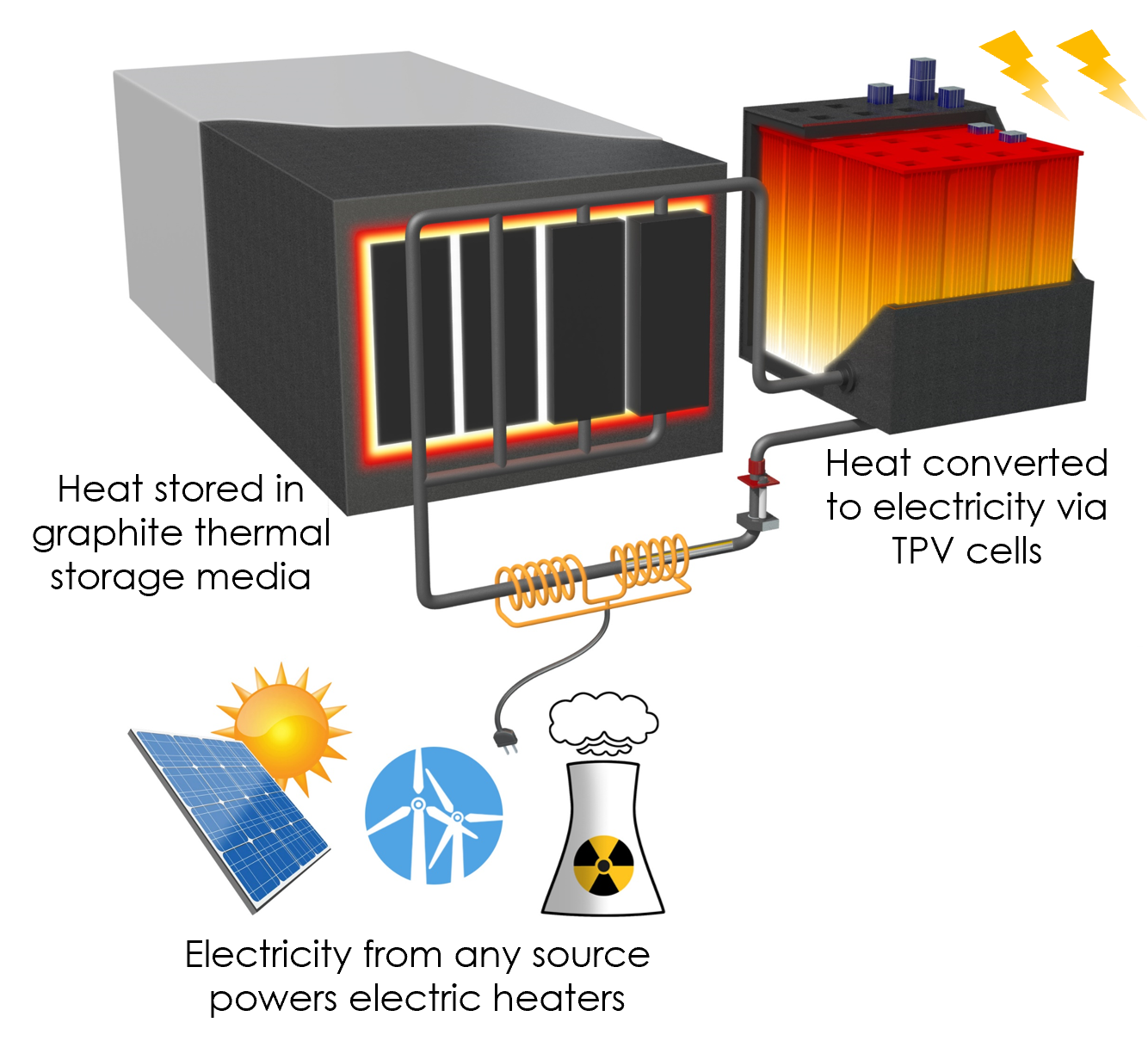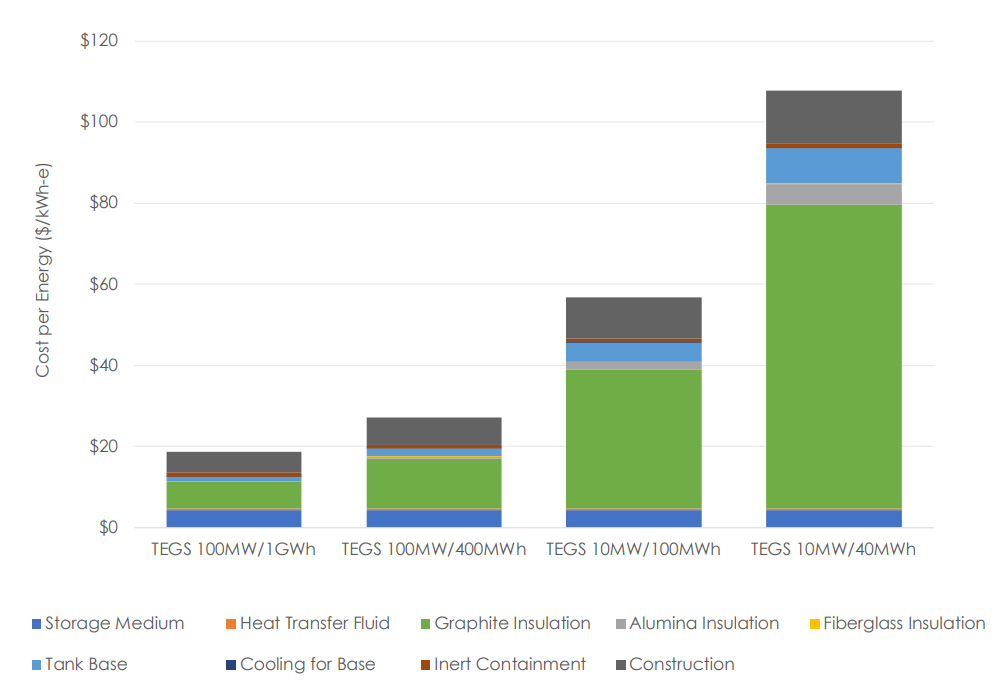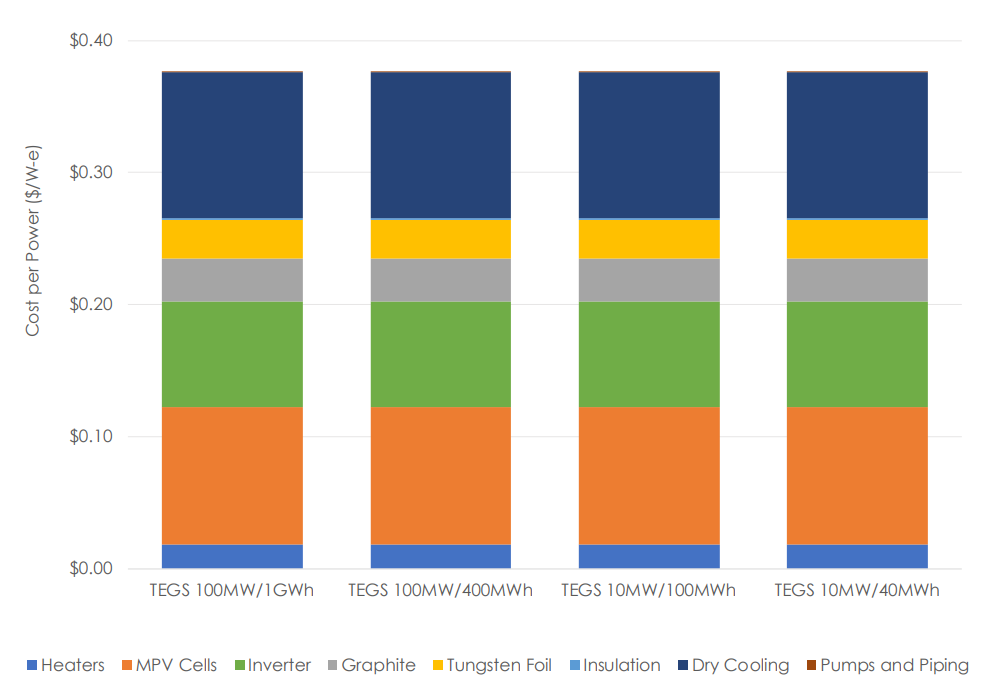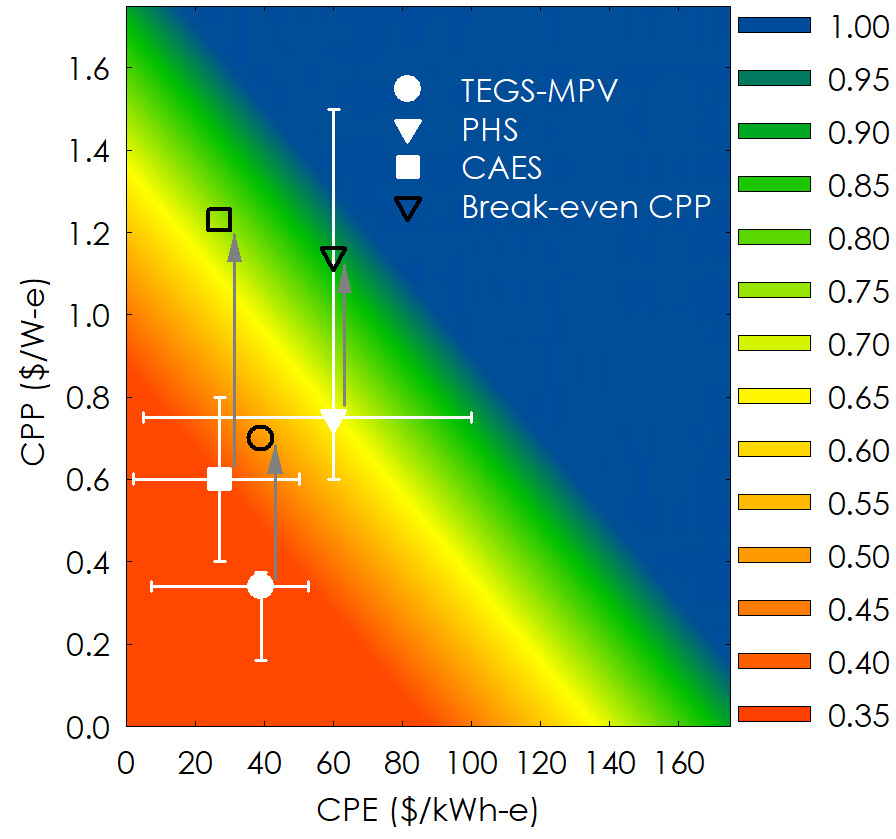Thermal Energy Grid Storage (TEGS) Cost
Overview

Economic Value
For any technology there are two unavoidable questions: “Can it be done?” and “Is it profitable?”. Here we explore the second question for an energy storage technology we’re developing called thermal energy grid storage (TEGS). In order to determine how profitable a system might be, both the value (what it can be sold for) and the cost of the TEGS system must be established.
The value of energy storage is dynamic (i.e., it changes with time) and will increase as more intermittent renewables are added to the electric grid. Nonetheless, the current value has been estimated in prior studies.[ref] In most US electricity markets, long-duration (several hours) energy storage derives most of its value from energy arbitrage and capacity payments.
Arbitrage revenue occurs when electricity is purchased at a low price (for example in the middle of the day when demand is low and solar production is high), then sold for a higher price (for example in the evening when demand is high and solar production is low – because the sun is setting).
Capacity payments, or other capacity mechanisms, are a flat/fixed payment given to electricity generators just for being available and ready to provide electricity whenever desired. This adds security and reliability to the grid as the grid keeps a number of resources essentially on standby in case something changes unexpectedly. As a result, storage resources are compensated for being ready on standby, and this compensation is termed a capacity payment. Long duration energy storage should be able to earn this payment, which can be significant. In fact, in some cases a storage system such as TEGS could become profitable on capacity payments alone.

Cost per energy (CPE)
In some ways, the cost of a technology is less uncertain than its value, because it relies more on controllable variables. For our TEGS system, we estimated its capital cost considering two main categories: Its Cost Per Energy stored (CPE) and its Cost Per Power capacity (CPP).
The figure shows a breakdown of the components contributing to the CPE. The cost is dominated by the graphite insulation which prevents heat loss from the system. As the scale of the system increases, the CPE decreases because the volume to surface area ratio of the system is larger which reduces the insulation requirements. For the full-scale 100 MW, 1 GWh system the CPE is < $20/kWh which meets the proposed cost targets for renewables with storage to be cost competitive with fossil fuels.
More information can be found in our techno-economic analysis here: https://arxiv.org/abs/2106.07624

Cost per power (CPP)
CPP comprised mostly of the heat engine and its cooling system. However, because this particular heat engine has a very high power density (~10 W/cm2), its cost can be very low because costs scale with cell area. In this case, cooling the photovoltaic (PV) cells, converting the power from direct current (DC) to alternating current (AC), and emitter materials are more likely to dominate.

Profit
Profit is simply value minus cost. However, there are many factors to consider when comparing technologies. For example, the efficiency of these systems is important because they must purchase more electricity than they sell. Similarly, the lifetime and storage duration must also be considered.
In order to compare TEGS to a few competitive storage technologies (note that lithium ion batteries aren’t currently competitive for long duration applications), we created the map shown in the Fig. The background color indicates the efficiency a technology would need to break even, or just barely be profitable. Therefore, it is desirable for a technology to be near the 0-0 axes of this chart. The black shapes indicate how much higher a technology’s CPP could be while retaining profitability, so the length of the gray arrow is an indicator of profitability.
Although all three technologies shown are profitable, it is important to remember that pumped hydroelectric storage (PHS) and compressed air energy storage (CAES) both rely on specific naturally occurring geographical or geological conditions and are consequently geographically constrained. Thus, one of the principle advantages of TEGS is that it can be similarly cost effective as the cheapest technologies currently available, but without the geographic/geologic restrictions (i.e., it can be installed anywhere).
